

Josh Nevett
2025 Hyundai i30 N auto review
2 Months Ago
There wasn't much wrong with the Toyota Camry, but an overhaul has made it more powerful, spacious, and efficient.
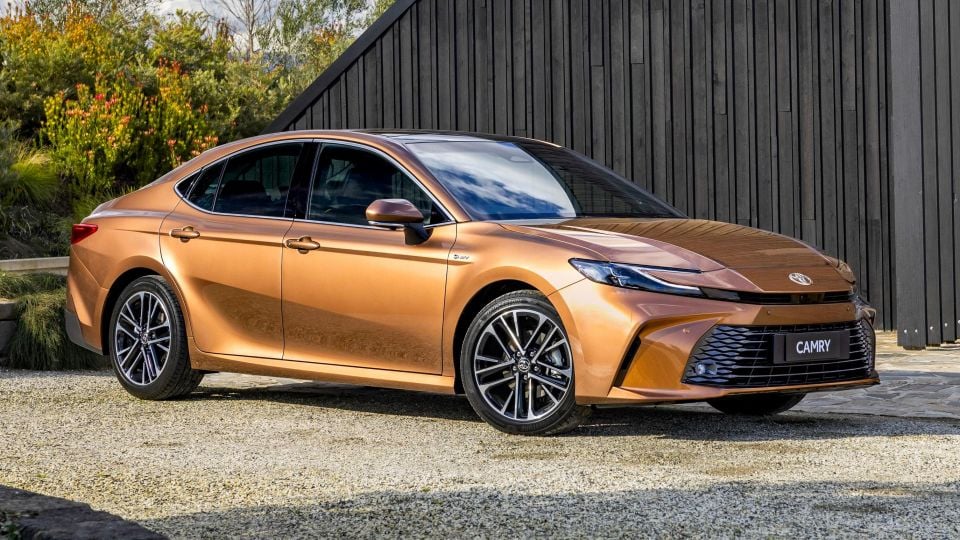


Quickly see how this car stacks up against its competition. Select any benchmark to see more details.
Where expert car reviews meet expert car buying – CarExpert gives you trusted advice, personalised service and real savings on your next new car.
Although the Toyota RAV4 Hybrid has been stealing the headlines, another electrified Toyota has been in seriously short supply in Australia.

The mid-sized Camry Hybrid sedan has been off sale since late in 2023 due to big demand and tight supply, but it’s now available again – and it’s been given an overhaul.
Although chunks of the new Camry you see here are carried over from the previous-generation model, it’s bigger, more powerful, and more efficient than before. If you’re an Uber or taxi driver – about 70 per cent of Camry buyers are – that’ll make a difference to your bottom line.
It’ll no doubt help if you’re a private buyer, although we’d wager they’ll be more taken with an even more upmarket interior and improved driving dynamics.
No matter what you’re looking for, this new Camry is a deeply impressive car that builds on its predecessor’s strengths.
Pricing for the new Camry range kicks off just shy of $40,000 before on-roads, while the private-buyer-focused SL is north of $50,000 before on-road costs.
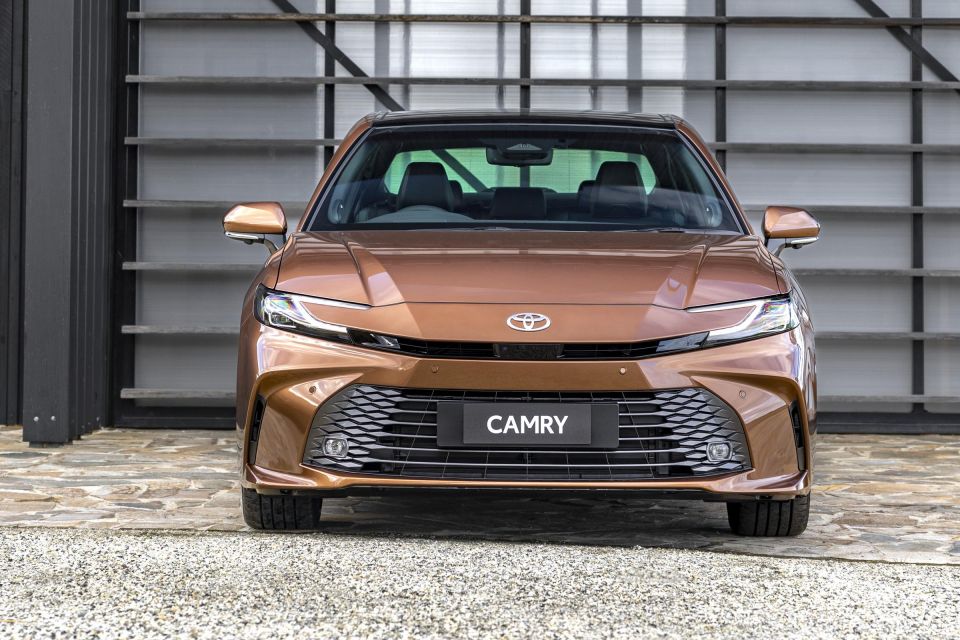
| Model | Price before on-roads |
|---|---|
| Toyota Camry Ascent | $39,990 |
| Toyota Camry Ascent Sport | $42,990 |
| Toyota Camry SL | $53,990 |
To see how the Toyota Camry stacks up against it rivals, use our comparison tool.
Buy your new car without the stress. It's fast, simple and completely free.

Great service from Travis and team, second time I have used this business would not hesitate to recommend them to anyone
Craig C.
Purchased a Ford Ranger in Sunshine Coast, QLD
CarExpert helped Craig save $7,224 on his Ford Ranger, now let us save you on your next new car.
Get your BEST priceEvery new Camry is more luxurious and grown up than the one before it, and this is no exception.
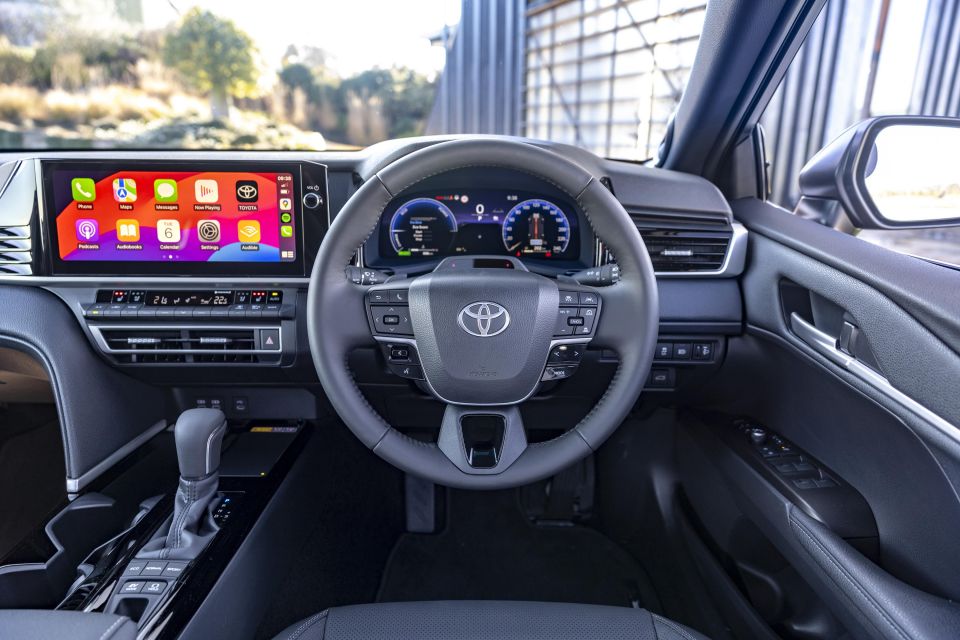
There’s more than just a hint of Lexus about the front seats, with their soft bases and supportive bolsters, and the dashboard design is handsome.
In the case of the fleet-focused Ascent and Ascent Sport, drivers spend seriously long periods of time behind the wheel on a regular basis. The new Camry won’t give them any headaches with its design or ergonomics, although the same promise can’t necessarily be made for their passengers.
There are two touch points differentiating the Ascent and Ascent Sport, and they’re the steering wheel and touchscreen.
Although the wheel in the Ascent isn’t offensive by urethane standards, the leather-wrapped unit in the Sport is nicer if you’re spending long hours behind the wheel.
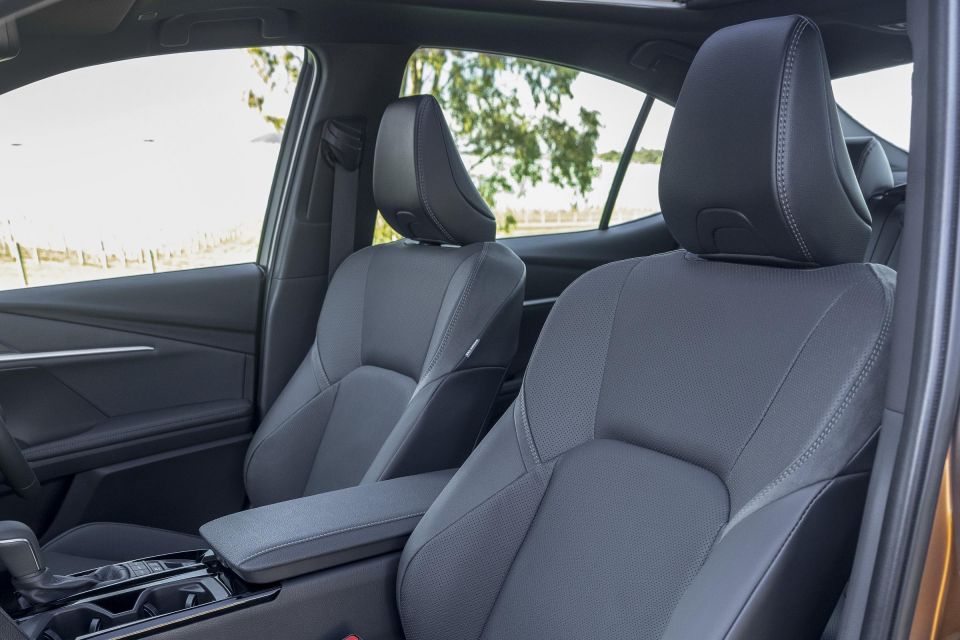
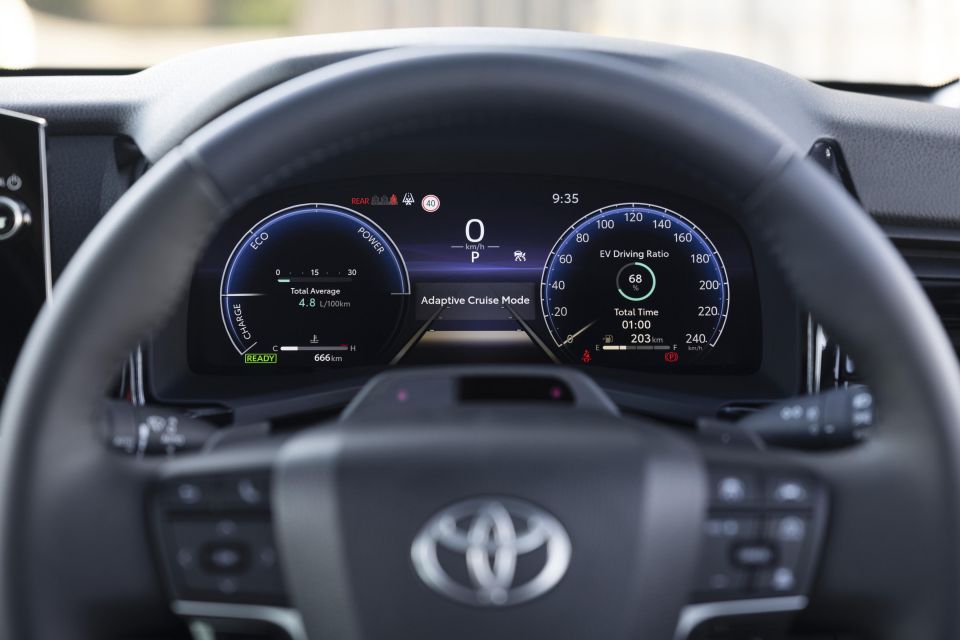
It’s a similar story with the touchscreen; the unit in the base Ascent is full-featured, and responds quickly to inputs. But it looks a bit sad in the new dashboard, especially when the 12.3-inch setup in the Sport or SL looks so premium.
Regardless of which you opt for, the latest Toyota touchscreen technology is a big step on from what came before. Wireless Apple CarPlay connects quickly and looks great if you like Apple’s interface, and all the key vehicle menus are easy to navigate on the move.
The digital driver’s display in the Ascent and Ascent Sport is a simple 7.0-inch unit, which won’t overwhelm anyone hopping out of an older Camry. You can toggle through a range of displays showing your media information, or details about the hybrid system, but it’s not endlessly configurable like a Volkswagen Group trip meter.
Jumping to the SL brings a more sophisticated, 12.3-inch digital instrument cluster. It allows for more freedom in your setup, but it’s still relatively basic in the context of what’s on offer in a similarly priced Skoda Octavia; the head-up display reserved for the range-topping Camry is welcome however.
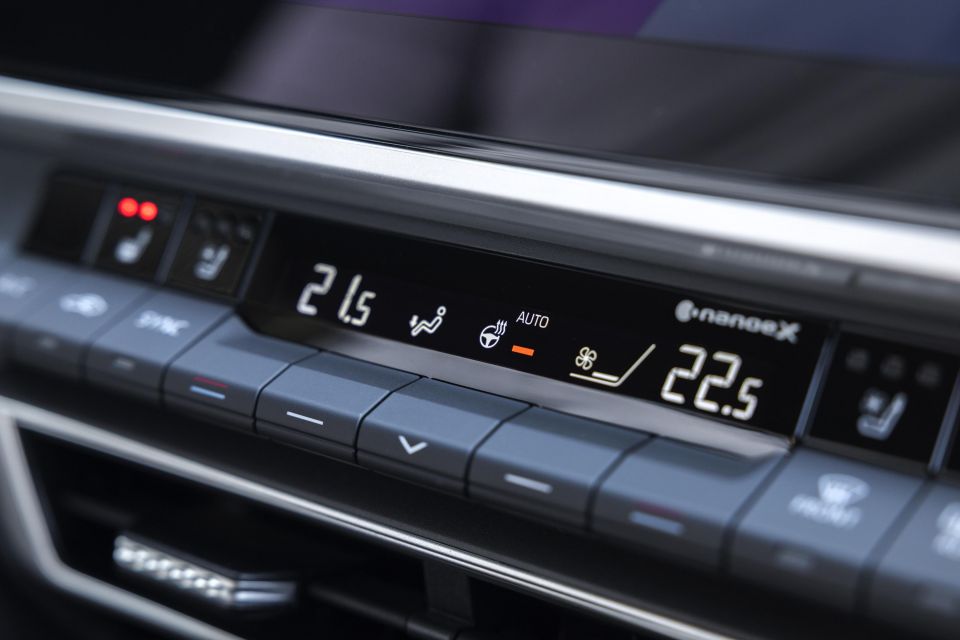
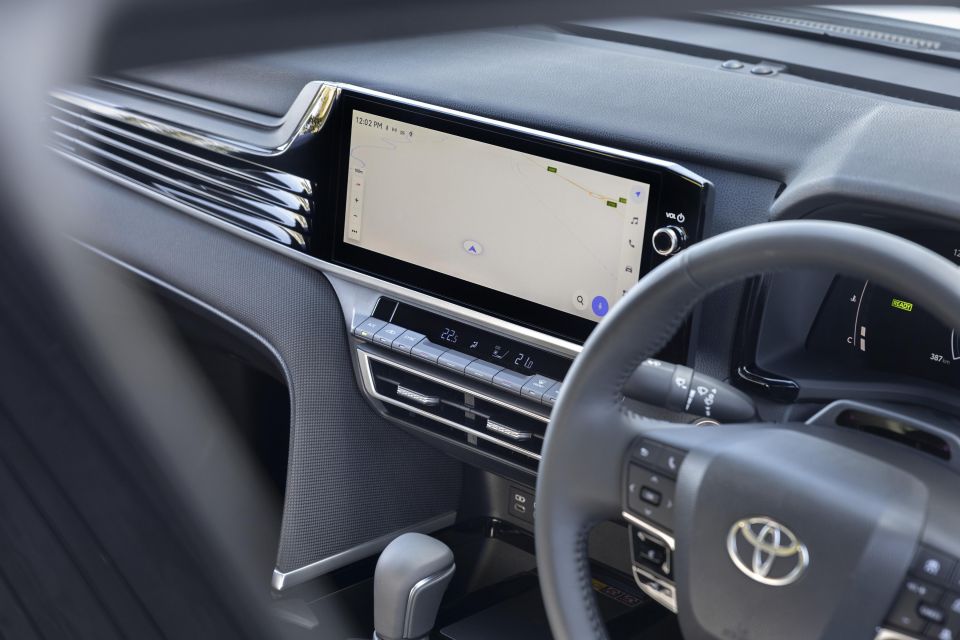
Although its technology doesn’t do all that much to elevate it above the fleet-focused Ascent twins, the SL is a much nicer place to spend time.
From the leather seat trim, punchier sound system, and sunroof – which does eat into headroom for taller drivers – it does a pretty convincing Lexus ES impression.
Storage space is excellent range-wide. Along with cupholders you get a phone-sized slot at the base of the dashboard (wireless charging in all but the Ascent), spacious door pockets, a deep central bin, and a big glovebox.
Although the new Camry is longer than before, all that length is in the body rather than the wheelbase. That means you still have to compete with a relatively small rear door opening to clamber in, but once back there the Camry is a good place to spend time.
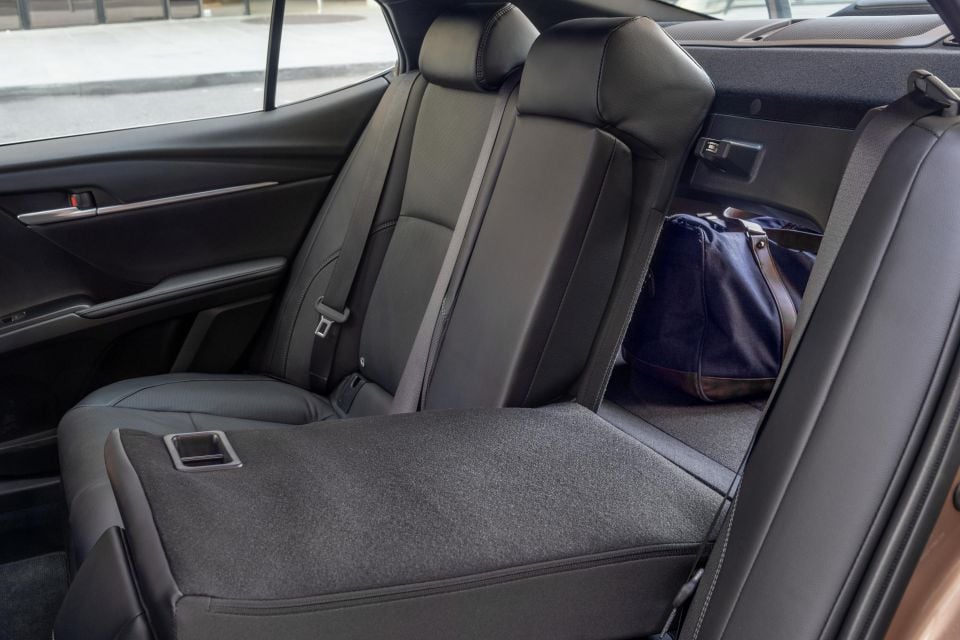
Legroom is excellent for adults behind adults, and the bench itself is nicely padded.
Headroom will be plentiful for most adults, although if you’re the sort of person who gets asked if you play basketball in public places the headliner will be too close for comfort.
It’s one negative that comes from the Camry’s modern makeover; sexy rooflines aren’t great for headroom.
Amenities back there include air vents and USB-C ports. ISOFIX features on the outboard rear seats, and there’s a trio of top tethers for child seats. The rear bench folds 60/40, and the boot opening is broad enough to make loading strollers easy.
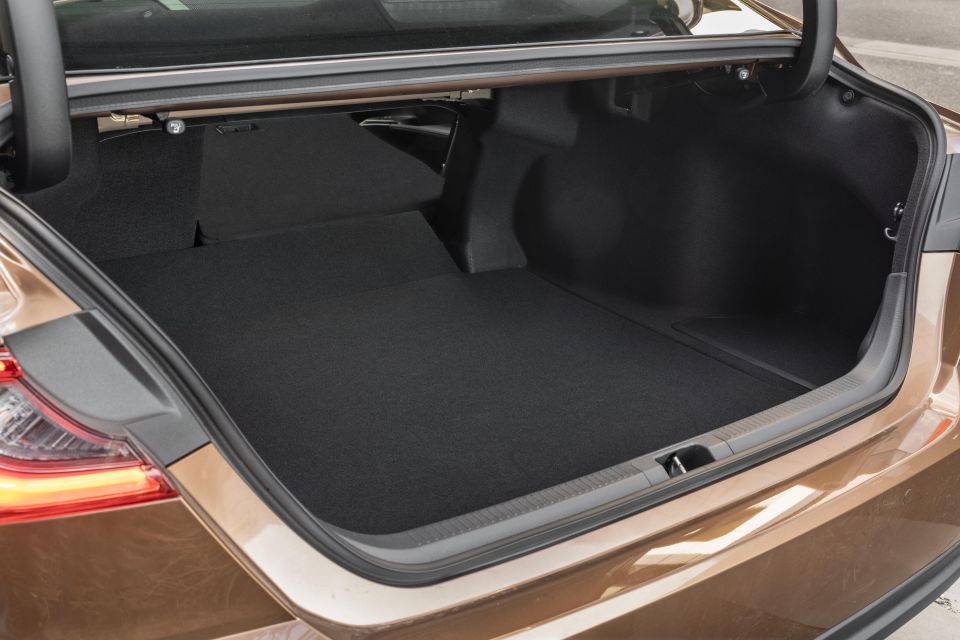
| Dimensions | Toyota Camry |
|---|---|
| Length | 4920mm |
| Width | 1840mm |
| Height | 1445mm |
| Wheelbase | 2825mm |
| Boot space | 524 litres |
To see how the Toyota Camry stacks up against it rivals, use our comparison tool.
This is the first Toyota in Australia to gain the brand’s new fifth-generation hybrid system. It’s more powerful, and offers better claimed efficiency than its predecessor.
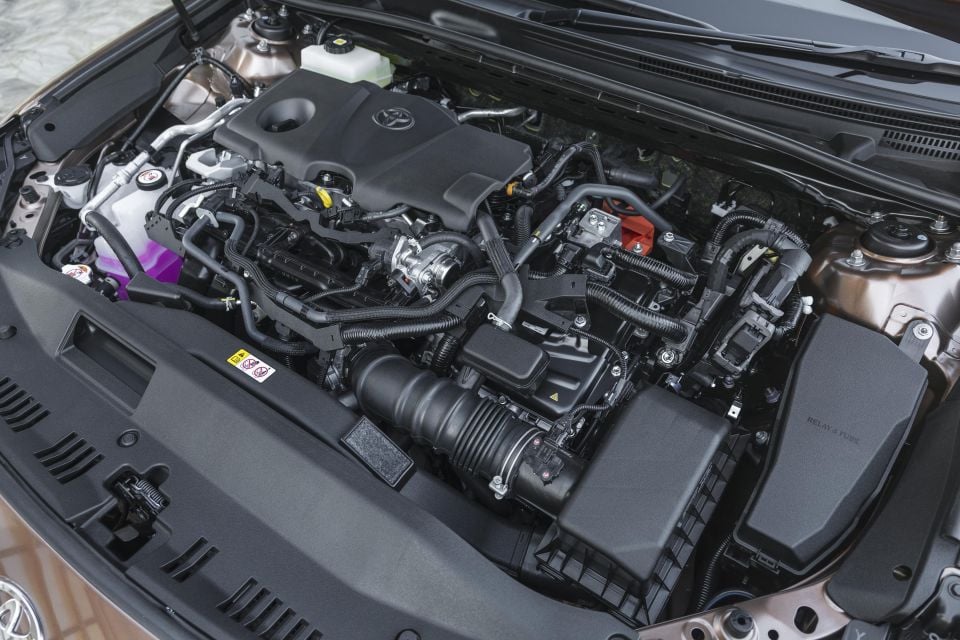
| Specifications | Toyota Camry |
|---|---|
| Engine | 2.5L 4cyl hybrid |
| Engine outputs | 138kW/221Nm |
| Electric motor outputs | 100kW/208Nm |
| System outputs | 170kW |
| Battery | 4.0Ah lithium-ion |
| Transmission | eCVT |
| Driven wheels | FWD |
| Weight | 1565-1625kg |
| Fuel economy (claimed) | 4.0L/100km |
| Fuel economy (as tested) | 3.6L/100km |
| Fuel tank capacity | 50 litres |
| Fuel requirement | 95 RON |
| CO2 emissions | 91g/km |
| Emissions standard | Euro 6 |
| Braked tow capacity | 400kg |
To see how the Toyota Camry stacks up against it rivals, use our comparison tool.
We’re very familiar with how Toyota hybrid systems operate. At least, we were…

Although it has a familiar flavour, the setup in the new Camry packs more of an electric punch than ever.
It’s able to accelerate faster and for longer without the petrol engine firing in the city, and can maintain or gently increase speed for short, flat stretches on the highway. Both of those changes make the car feel smoother and more refined, and aid efficiency.
When the petrol engine does kick in, it’s smoother and quieter than ever. It’s hard to tell whether you’re getting electric, petrol, or hybrid power at some points given how good the noise suppression is in the cabin.
Combined with effortlessly light steering and a comfortable low-speed ride, especially in the Ascent and Sport on their smaller 17-inch wheels, the smooth-moving hybrid system makes for an excellent city car.
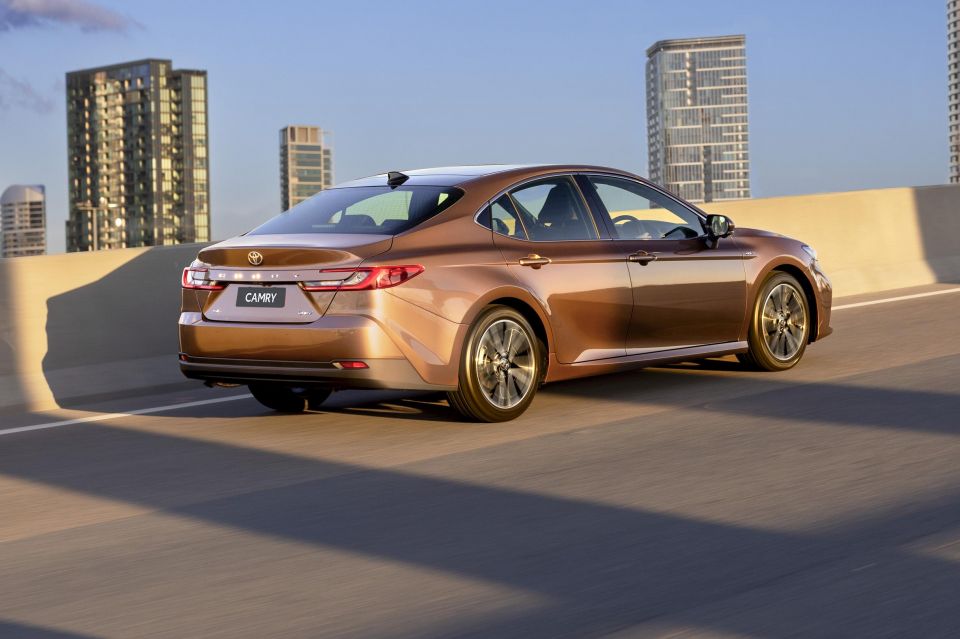
Although it’s not a small car, its controls are friendly. The window line is generous, and there’s plenty of active safety technology – along with a reversing camera and parking sensors – on hand to ward off dinged bumpers or wheels.
Put your foot down and the Camry isn’t what you’d call quick, but it does feel punchier than before… and makes less noise inside when you’re in a hurry. The impact of the extra electric punch is noticeable, but there are also changes to the petrol engine that have helped.
Regardless of trim, this is a very happy highway cruiser. The hybrid system seamlessly shifts between power sources, and the comfort-oriented suspension tune delivers a cushy ride.
The only real knock on refinement is road noise on coarse chip highways, with more than ideal white noise sneaking into the cabin at 100km/h.

Toyota’s active driver assists are smartly calibrated, too. The adaptive cruise confidently maintains a gap to the car in front, and the lane-keeping assist gently nudges you back between the white lines.
There’s also active lane centring to take a more hands-on approach to positioning the car on highway stints. Credit in particular goes to the driver monitoring system, which stayed quiet for most of our time behind the wheel.
There’s even some fun to be had when the road gets interesting. All the cars built on a version of Toyota’s latest global architecture feel light on their feet, and the Camry is no exception.
To see how the Toyota Camry stacks up against it rivals, use our comparison tool.
There are trim levels in the hybrid-only 2025 Toyota Camry range.
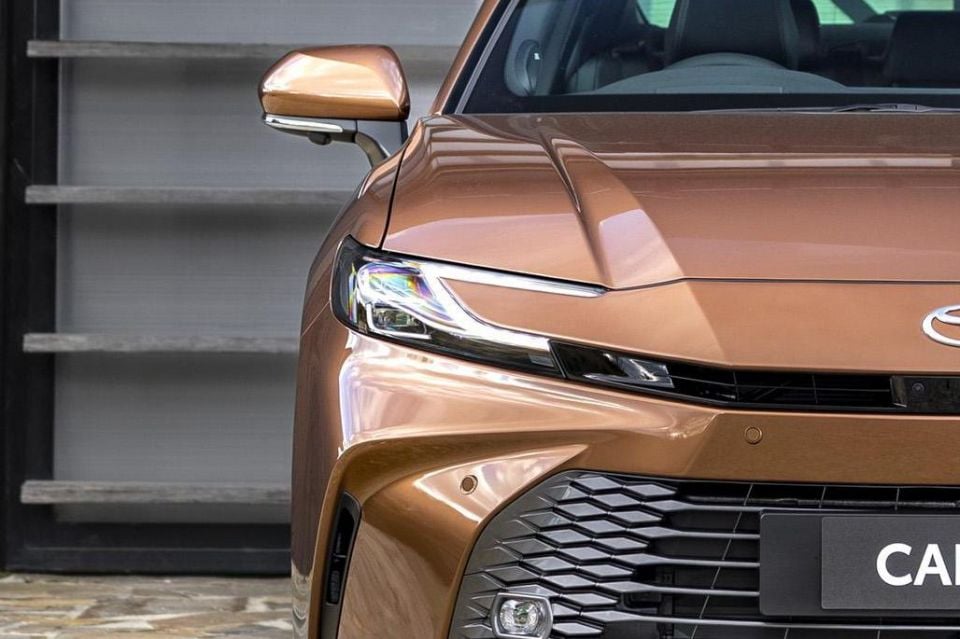

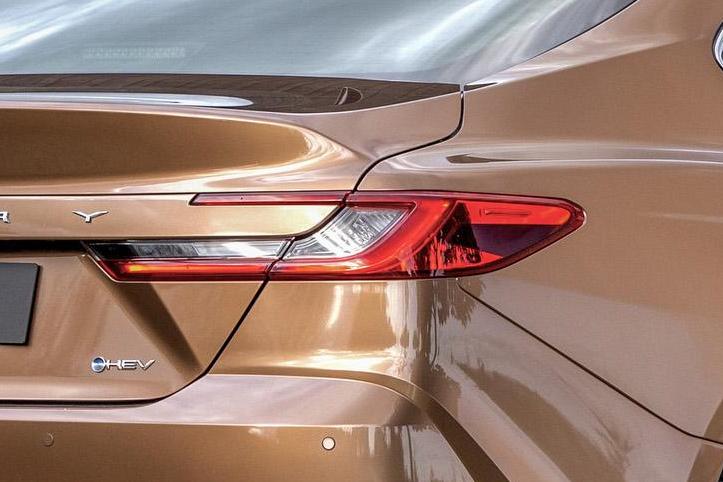

Camry Ascent highlights:
Ascent Sport adds:
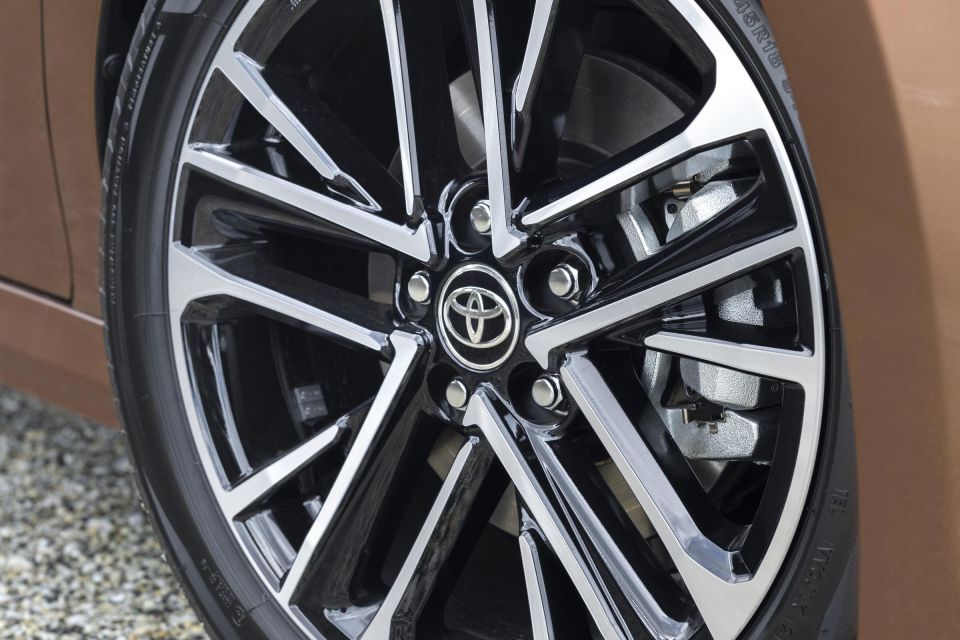

Where expert car reviews meet expert car buying – CarExpert gives you trusted advice, personalised service and real savings on your next new car.
SL adds:
To see how the Toyota Camry stacks up against it rivals, use our comparison tool.
The new Toyota Camry hasn’t yet been crash tested by ANCAP or Euro NCAP.

Standard safety equipment includes:
Toyota Australia backs its range with a five-year, unlimited-kilometre warranty. That extends to seven years on the driveline if you service on time within the Toyota dealer network.
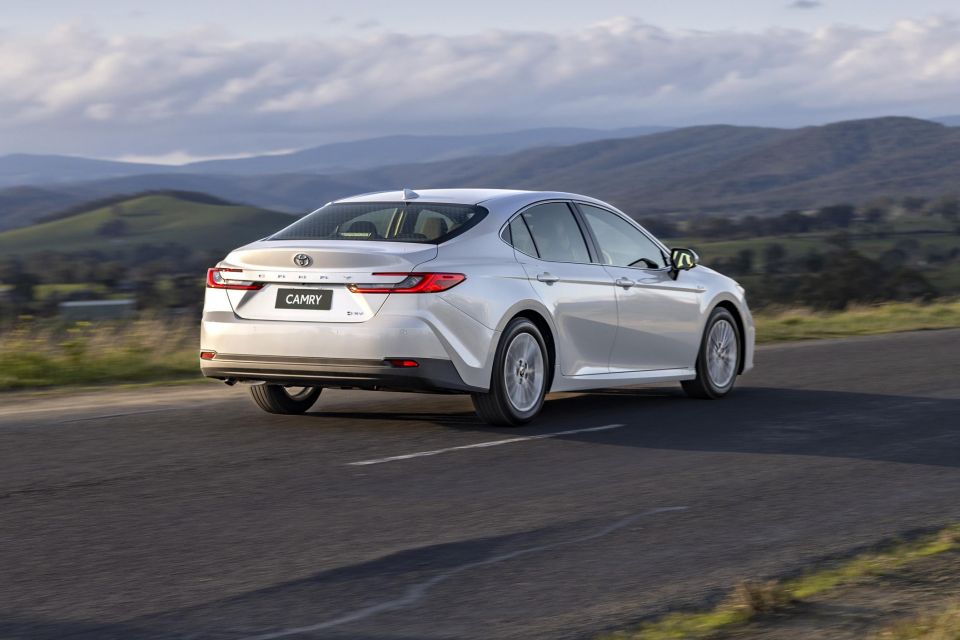
| Running costs | Toyota Camry |
|---|---|
| Warranty | 5 years, unlimited kilometres |
| Roadside assistance | N/A |
| Service intervals | 12 months or 15,000 kilometres |
| Capped-price servicing | 5 years |
| Total capped-price service cost | $1275 |
Buy your new car without the stress. It's fast, simple and completely free.

Great service from Travis and team, second time I have used this business would not hesitate to recommend them to anyone
Craig C.
Purchased a Ford Ranger in Sunshine Coast, QLD
CarExpert helped Craig save $7,224 on his Ford Ranger, now let us save you on your next new car.
Get your BEST priceToyota has taken a good thing and made it better.
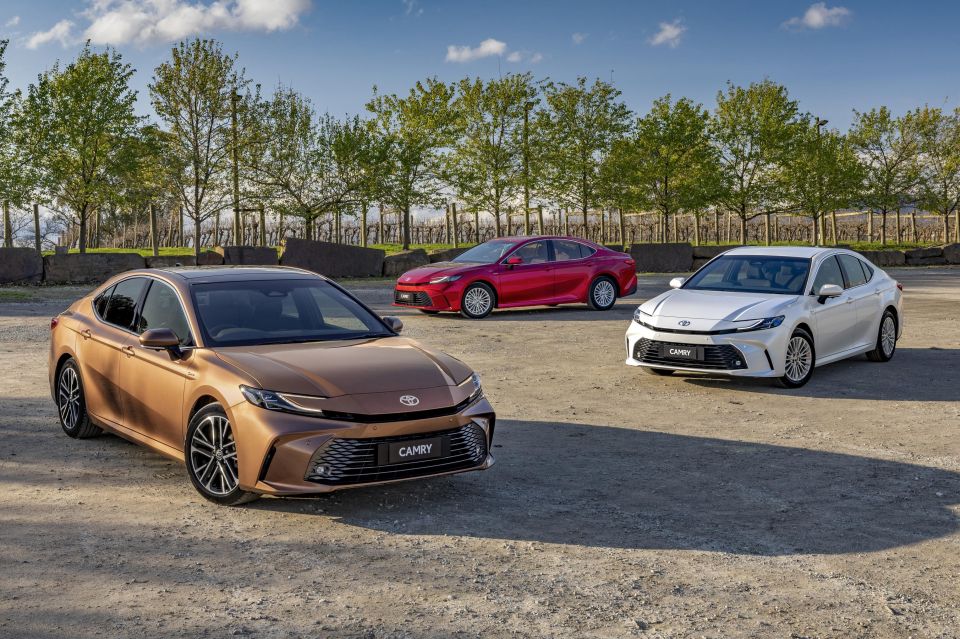
Yes, the electric revolution is well underway, but its latest hybrid technology makes for a more appealing stepping stone than ever.
Regardless of where you think petrol, hybrid, and electric power fit in 2024, Toyota deserves respect for its relentless pursuit of hybrid efficiency. The new Camry is an example of what happens when you continually improve on a winning formula.
Fleet buyers will no doubt love its more efficient powertrain and more comfortable cabin, while the SL is a compelling option for private buyers keen to buck the SUV trend.
Putting ego aside, there are very few questions that can’t be answered by the Camry.
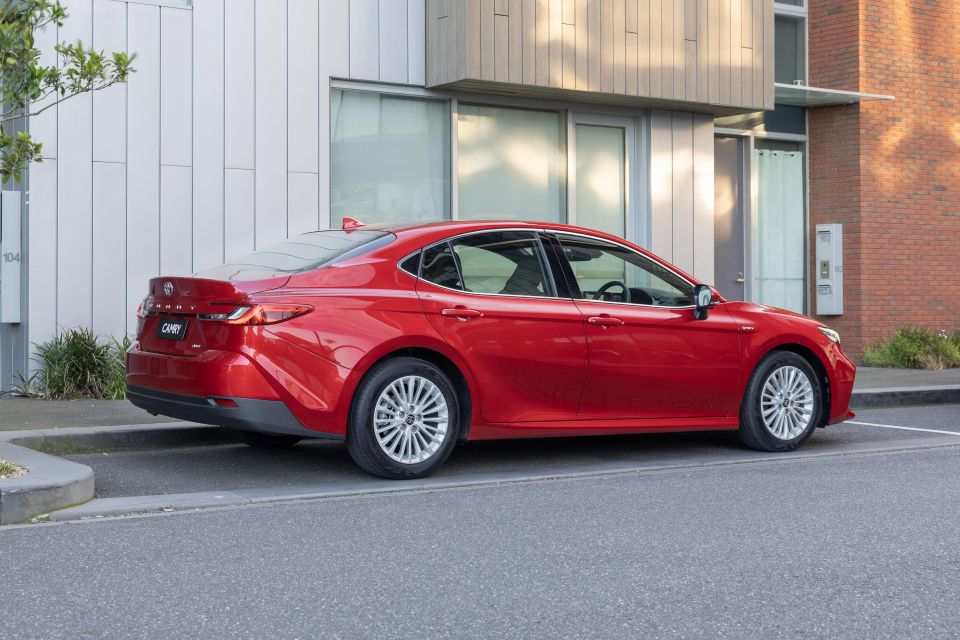
Interested in buying a Toyota Camry? Get in touch with one of CarExpert’s trusted dealers here
Click the images for the full gallery
MORE: Everything Toyota Camry
Where expert car reviews meet expert car buying – CarExpert gives you trusted advice, personalised service and real savings on your next new car.
Scott Collie is an automotive journalist based in Melbourne, Australia. Scott studied journalism at RMIT University and, after a lifelong obsession with everything automotive, started covering the car industry shortly afterwards. He has a passion for travel, and is an avid Melbourne Demons supporter.


Josh Nevett
2 Months Ago


William Stopford
2 Months Ago


James Wong
2 Months Ago


Max Davies
1 Month Ago


Andrew Maclean
19 Days Ago
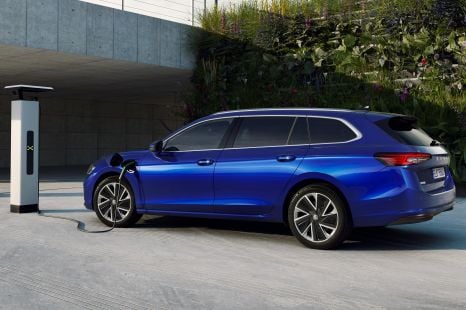

Josh Nevett
12 Days Ago